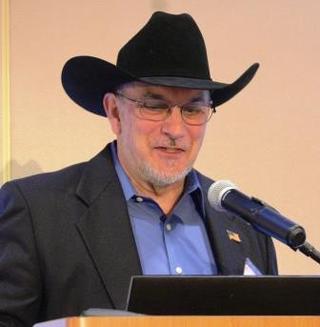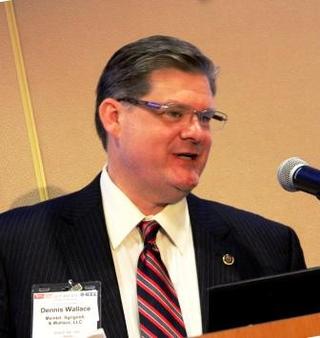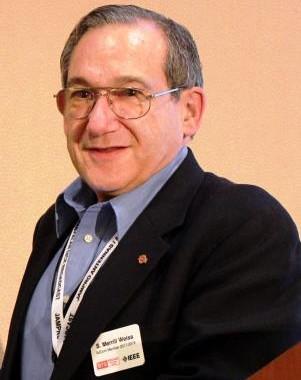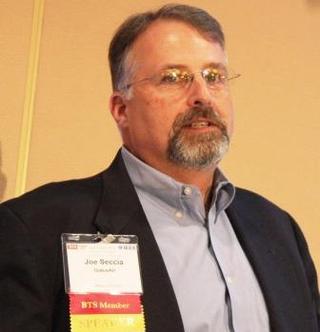IEEE BTS Examines Repack Issues
ARLINGTON, VA.—Broadcast engineers from around the world gathered Oct. 10-12 for the annual IEEE Broadcast Symposium, a forum for exchanging information on the latest developments in the broadcast arena.
Returning to its Washington, D.C. area roots after four years on the road, the conference had plenty of television- and radio-related items on its agenda, with the on-going U.S. TV broadcast spectrum repack and the ATSC 3.0 DTV initiative topping the list. However, the former seemed to draw the most attention.
THE DEVIL IS IN THE (REIMBURSEMENT) DETAILS

Matthew Sanderford
Matthew Sanderford, president of Marsand—a Texas-based broadcast engineering consulting firm—was first in line to describe the repack landscape, noting that nearly 1,000 stations were involved in the operation: 175 sold their licenses, 31 are moving from UHF to VHF channels, 12 are going off the air, and 61 Canadian stations will have to make changes.
“This gives you a picture of the massiveness of what this involves,” said Sanderford, noting that six months into the program’s timeline, government reimbursements for broadcasters have become an issue. “Stations are waiting to start the process of this construction and order equipment, but they can’t do it because they don’t have the funds right now,” said Sanderford. “This is an unanticipated problem; it’s a fear that many had that’s becoming a reality right now.”
He said that one of his clients had recently been informed by the FCC that only 50 percent of the reimbursement amount submitted was currently available, with the commission asking him “what kind of problem is this going to cause for you?” Sanderford said that out of a sense of decorum he would not repeat the answer. “But it was basically ‘we can’t start; just the tower work alone is more than 50 percent of what [was asked for]’.”
He also flagged other issues that could slow the repack, including a lack of RF-experienced personnel. “We have been promoting IT, and the expertise is there in all stations,” said Sanderford, “But RF is not, for the most part. We’re finding out that except for the major markets—and even in many of the major markets—those engineers do not understand RF. They do not even know where the transmitter plant is.”
CHANNEL 14 AND THE REPACK

Dennis Wallace
Another repack issue stems from channel reassignments—in particular, landing on Channel 14—with both Merrill Weiss, president of the Merrill Weiss Group, and Dennis Wallace, a partner in the Meintel, Sgrignoli and Wallace Group, describing what happens when broadcasters are assigned this channel as their new home.
Wallace noted that there was a long-standing history of interference problems involving Channel 14 operators and land mobile radio users, and this will likely be exacerbated by the FCC’s making 33 new assignments on this channel, already home to 15 U.S. broadcasters. “Many of the new Channel 14 assignments are in larger urbanized areas with a large user base of 450 to 470 MHz land mobile operations,” Wallace said.
Weiss described the nature of the problem in detail.
“The baseline Channel 14 is 470-476 MHz,” said Weiss. “And the land mobile service goes from 450-470 MHz, so there is no guard band between a service that can be delivering one megawatt starting at 470.001 MHz and another service that can be looking for a quarter-microvolt signal at 469.9995 MHz, and yet we have to provide protection, so this gets a wee bit crazy.”
Weiss also flagged an additional issue with the potential to slow down the repack, stemming from significant changes in the FCC edict requiring Channel 14 operators to protect land mobile services. “[The mandate has] always been there,” said Weiss. “But it’s never been worded the way it is on repack Channel 14 construction permits.” He then read the updated FCC requirement:

Merill Weiss
“During equipment tests, permittee shall take measures to identify and eliminate objectional interference which may be caused in the 460-470 MHz band. Documentation that interference will not be caused shall be submitted. Program tests shall not be commenced, and may only be started after specific authority is granted by the Commission.”
“So, unlike in the past where program test authority was automatic when the facility was built, we [now] have an obligation to go out and prove and document that no interference will be caused,” said Weiss.
In describing the impact that a Channel 14 reassignment can have, Wallace used Washington, D.C.’s WETA-TV as an example. The station now operates on Channel 27, but was told it has to move to Channel 14. “Our firm did an analysis of the situation and found 2,136 land mobile licensees were within a 100-km distance [of the WETA-TV transmitter], and an interference study revealed about 1,200 licenses would be impacted from WETA-TV Ch. 14 operations,” said Wallace.
He observed that it would be impossible to resolve such a large number of potential interference cases in a timely manner. The only solution appears to be a different channel assignment. However, such a move has been made very difficult due to other station reassignments and short-spacing issues. Wallace said that a number of scenarios were developed, but only one seemed workable: relocate WETA-TV to Channel 31. However, this move would require six other stations to either change channels, make power adjustments, or install a new mask filter.
NO ROOM IN THE SCHEDULE FOR CONTINGENCES
Joe Seccia, manager of TV transmission market and product development strategy at GatesAir, flagged other potential transition issues.

Joe Seccia
“In phase one, there are 94 stations that have to be repacked by Nov. 30 next year. That’s one station every three days, starting right now. As we slide down toward November, maybe the last 60 or 30 days of phase one, we’re going to go from one station every three days to three stations a day that need to move. That doesn’t bring into account the 114 stations in phase two that are also having to do simultaneous work. That’s a lot.
“There’s no slack; there’s no float in the schedule, but those are the rules of the auction. There’s a lot to do and seemingly not enough people to do it,” Seccia added, remarking that the recent deaths of tower workers in a Florida accident was a wakeup call about what can happen to plans and schedules.
“We’re just getting started and boom—very sobering.”
Next year’s IEEE Broadcast Symposium will take place in Arlington, Va., Oct. 9-11.
For more information on the repack, visit TV Technology's repack silo.
Get the TV Tech Newsletter
The professional video industry's #1 source for news, trends and product and tech information. Sign up below.
